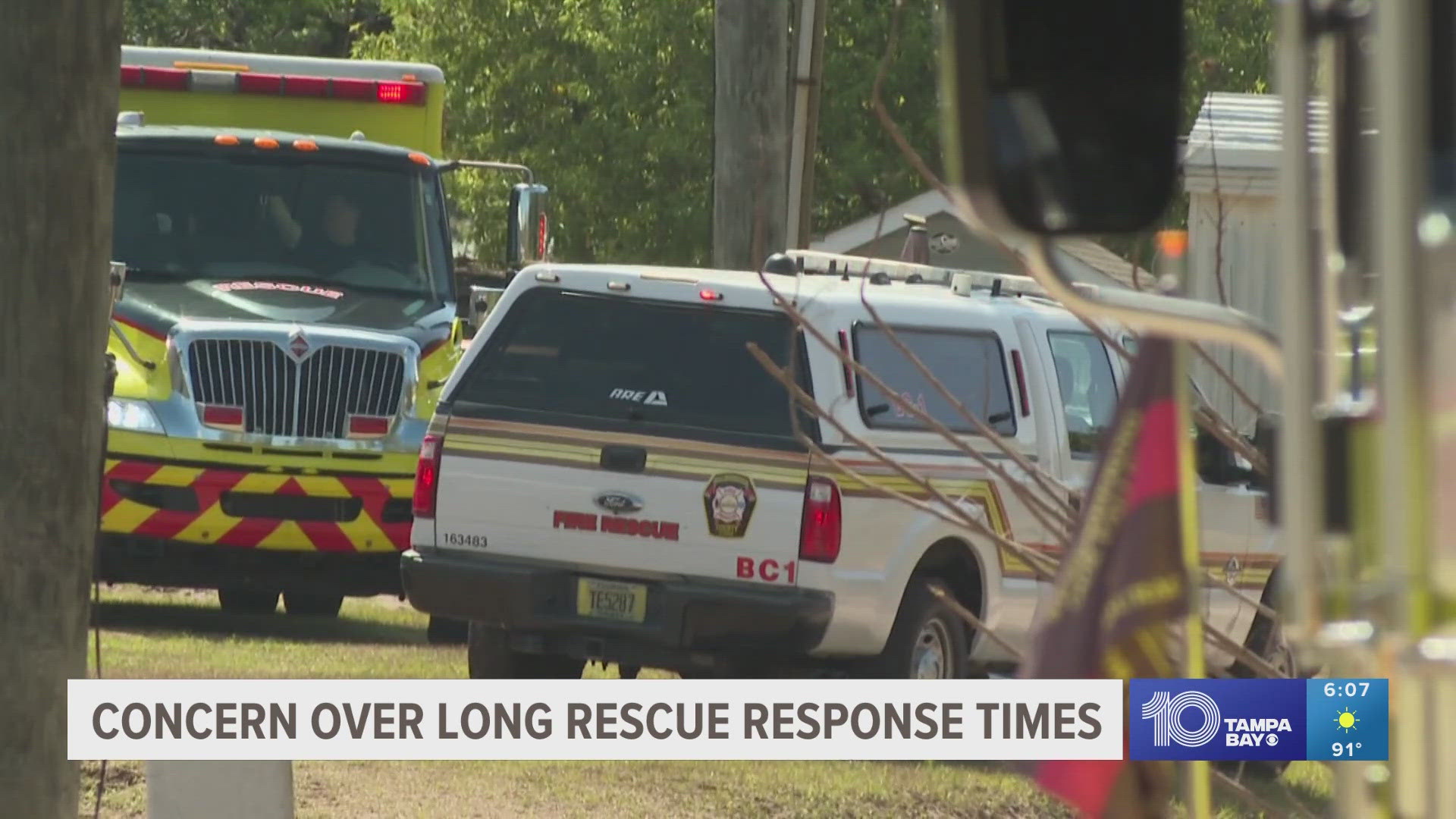LITHIA, Fla. — When flames engulfed a Lithia mobile home last year with a family of five inside, Tobi Porter was one of the first on the scene.
“I will remember that call for the rest of my life,” Porter, who is a lieutenant and paramedic with Hillsborough County Fire Rescue, said.
10 Investigates has uncovered it took 16 minutes to get to the scene. Angel Lopez, Sr. died trying to save his children. Angel Lopez, Jr., 5, and Harmony Lopez, 14 months, also died in the blaze. Three-year-old Elijah Lopez escaped with his mother, Veronica, whose hair was singed and hands were burned.
“Probably one of the worst fire calls that I have run in my career,” Porter said.
According to the Hillsborough County Fire Rescue Master Plan, a 16-minute response time in a rural area is six minutes too long. HCFR says the target response time for rural areas is ten minutes or less.
“Time is everything. Time is heart muscle. Time is brain cells,” Porter said. “And even though we went in and tried to do everything we could, we couldn’t change the outcome…we should be there in time, and we weren’t.”
More than nine miles stood between the family’s home and the closest fire station. Maps suggest an average travel time of 14 to 18 minutes.
“I think having a station there would have completely changed the outcome,” Porter said.
HCFR has taken steps to drop response times, including putting five ambulances in areas with the highest call volume and assigning crews in those spots to 12-hour shifts.
HCFR has also implemented traffic pre-emption where trucks use a special signal to help change stoplights green as they travel.
“It’s actually improved response times year-to-date compared to 2023,” HCFR Information Section Chief Rob Herrin said. “We’ve seen an improvement of 38 seconds overall in response times and it doesn’t sound like a lot, but 38 seconds can be a big difference in a fire or medical scene.”
10 Investigates found last year alone, fire rescue had nearly 140,000 calls for service—with numbers only expected to rise as the population in the county grows.
HCFR says it needs about 20 new stations to accommodate the growth and to save lives.
“Adding stations reduces response times in a way that technology can’t,” said Tim Pearson, president of Hillsborough County Firefighters, IAFF Local 2292. “You know, a 16-minute drive is a 16-minute drive until you drop the station in closer to that area.”
However, stations cost money. The Community Investment Tax, or CIT helps for capital improvement projects like fire stations. It’s a half-percent sales tax up for renewal in November.
“This tax is really important because we cannot keep up with growth,” Gwen Myers said.
Myers, who is vice chair of the Hillsborough County Commission, says the CIT renewal would help pay for nine new fire stations in areas of need.
“How do we shorten the response time? That is important. Some people need in areas more fire stations. We’re looking at nine. That is really important that we have fire stations throughout our county so that if something happened, we have an engine and the vehicles that can get to that area quick.”
Right now, the county commission proposes fire rescue gets $168,000,000 of the CIT collected if voters approve in November.
“We’ve seen the traffic. We’ve seen the potholes. We’ve seen the delayed response times for fire rescue,” Pearson said. “And so, it’s essential that the CIT passes.”
Pearson and Porter say it’s also critical that people learn CPR to increase the chances of survival for a person in distress while waiting for help. It’s especially important with wait times on the rise.
Still, first responders say the need for the CIT is urgent in order to prevent tragedies where time and distance stand in the way of saving lives.
“I know it costs money, but it will save your life one day,” Porter said.
Emerald Morrow is an investigative reporter with 10 Tampa Bay. Like her on Facebook and follow her on X. You can also email her at emorrow@10tampabay.com.

